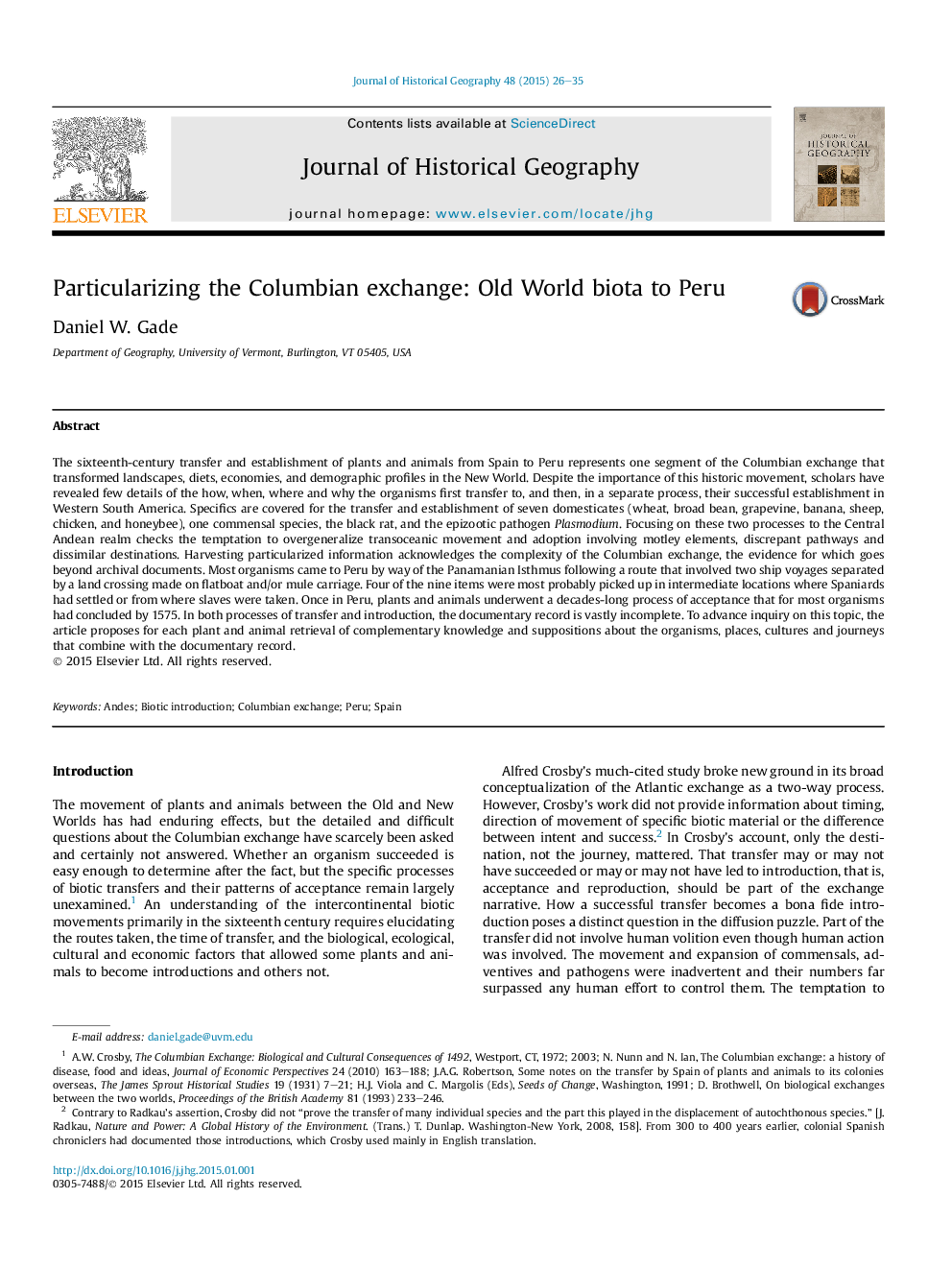| کد مقاله | کد نشریه | سال انتشار | مقاله انگلیسی | نسخه تمام متن |
|---|---|---|---|---|
| 1038965 | 1483977 | 2015 | 10 صفحه PDF | دانلود رایگان |
• Reconstructing past movement of an organism benefits from a diverse range of data.
• Transfer and introduction, two different processes, embody failures and successes.
• Human agency governs the transfer of domesticates, weeds, pests and parasites.
• Implantation of Spanish agriculture in Peru involved a lag time of four decades.
• Expanding and correcting a narrative for each biotic introduction offers a path to progress.
The sixteenth-century transfer and establishment of plants and animals from Spain to Peru represents one segment of the Columbian exchange that transformed landscapes, diets, economies, and demographic profiles in the New World. Despite the importance of this historic movement, scholars have revealed few details of the how, when, where and why the organisms first transfer to, and then, in a separate process, their successful establishment in Western South America. Specifics are covered for the transfer and establishment of seven domesticates (wheat, broad bean, grapevine, banana, sheep, chicken, and honeybee), one commensal species, the black rat, and the epizootic pathogen Plasmodium. Focusing on these two processes to the Central Andean realm checks the temptation to overgeneralize transoceanic movement and adoption involving motley elements, discrepant pathways and dissimilar destinations. Harvesting particularized information acknowledges the complexity of the Columbian exchange, the evidence for which goes beyond archival documents. Most organisms came to Peru by way of the Panamanian Isthmus following a route that involved two ship voyages separated by a land crossing made on flatboat and/or mule carriage. Four of the nine items were most probably picked up in intermediate locations where Spaniards had settled or from where slaves were taken. Once in Peru, plants and animals underwent a decades-long process of acceptance that for most organisms had concluded by 1575. In both processes of transfer and introduction, the documentary record is vastly incomplete. To advance inquiry on this topic, the article proposes for each plant and animal retrieval of complementary knowledge and suppositions about the organisms, places, cultures and journeys that combine with the documentary record.
Journal: Journal of Historical Geography - Volume 48, April 2015, Pages 26–35
